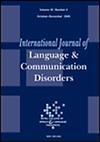Phonological Awareness Skills in Thai-Speaking Children: A Scoping Review
Abstract
Background
Phonological awareness is an important skill for literacy development. However, limited research has been conducted on tonal languages or non-alphabetic orthographies, including Thai. Understanding the development of phonological awareness in Thai-speaking children is important for identifying risk factors for dyslexia and for understanding the role of phonological awareness in Thai-speaking children with communication impairments.
Aims
This scoping review synthesised empirical studies on phonological awareness in Thai-speaking children. We aimed to describe the tasks and experiments typically used in studies, outline the performance of phonological awareness in typically developing and non-typically developing children across preschool to school age, and highlight the importance of phonological awareness skills to literacy development.
Methods
Peer-reviewed papers were retrieved from eight electronic databases, supplemented by manual reference and website searches for relevant articles on phonological awareness in Thai-speaking children. The inclusion criteria for eligible studies were articles published in English since 2000 investigating phonological awareness skills in preschool- and school-aged Thai-speaking children (2;0–12;0 years).
Main Contributions
Fourteen full-text articles were screened, and 13 met the inclusion criteria. Papers focused on the relationship between phonological awareness and reading skills (n = 5), phonological awareness skills in children at risk of learning disabilities or dyslexia (n = 5), and lexical tone awareness (n = 2). The findings showed that phonological awareness was important for reading abilities across all reported ages, while lexical tone awareness significantly impacted reading abilities only when children were in kindergarten (3;0–6;0 years). Phonological awareness tests were also used as a tool for identifying children at risk of learning disabilities or dyslexia. Initial phoneme identification was the most commonly used phonological awareness task across all 13 studies.
Conclusions
Phonological awareness is essential for reading skills and identifying children at risk of learning disabilities or dyslexia. Future research is needed to investigate the acquisition of phonological awareness in Thai-speaking children and to examine the phonological awareness skills of children with communication impairments, such as speech sound disorders.
WHAT THIS PAPER ADDS
- Phonological awareness is essential for the development of literacy skills across many languages and orthographies. Phonological awareness acquisition in English and other similar languages follows a predictable pattern of development from larger units, such as syllable identification, to smaller units, such as phoneme identification. Children with speech sound disorders, or those at risk of dyslexia, may have problems with these skills, leading to literacy problems or speech sound disorders that are slow to resolve.
- This scoping review revealed that phonological awareness is an important element in developing reading skills across ages in Thai-speaking children. Moreover, lexical tone awareness, which is important in Thai, influenced reading skills only at the kindergarten level, while the effect dissipated in older age groups. A variety of phonological and tone awareness tasks were applied to identify children at risk of learning disabilities or dyslexia in the studies included in the review.
- The findings of this scoping review underscore the importance of phonological awareness in reading skills for Thai-speaking children. There is currently no single Thai phonological awareness assessment that covers all aspects of phonological and tone awareness for Thai speakers. Additional research is needed on phonological awareness in children with speech, language, and communication needs, such as children with speech sound disorders or developmental language disorder.


 求助内容:
求助内容: 应助结果提醒方式:
应助结果提醒方式:


